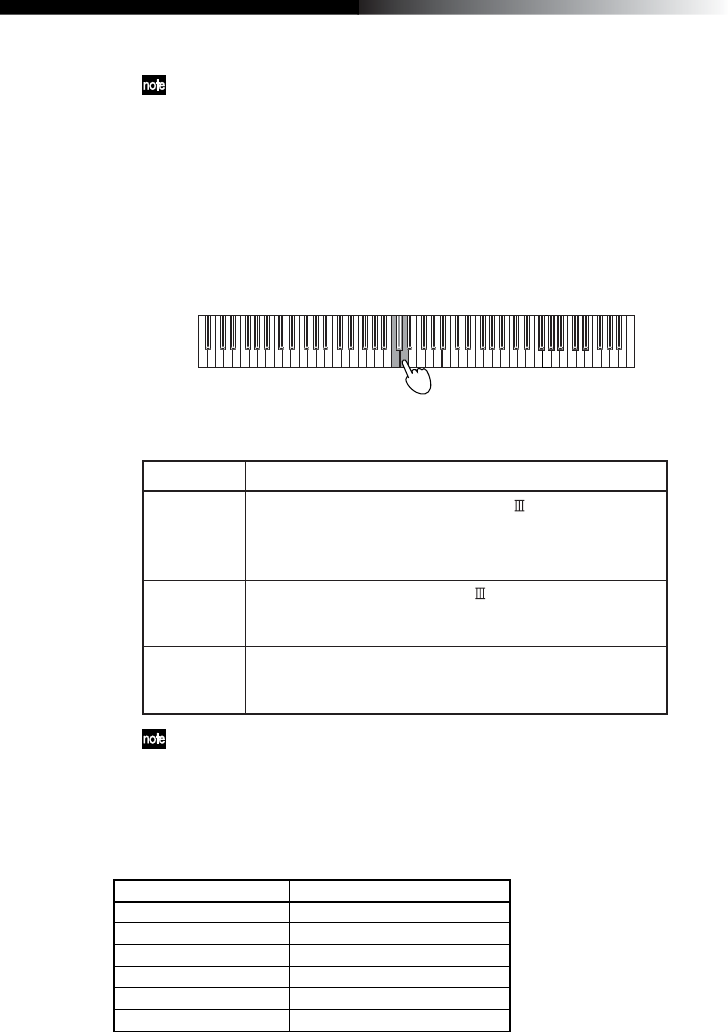
18
4 Press the [BANK] button to exit the Setting mode.
The pitch setting reverts to standard A4=440Hz if the power is cut off
Temperament
Temperaments are different tuning systems, mainly used in the baroque and classical
periods. In addition to the standard equal tuning, the K61P provides historical Kirnberger
and Werckmeister temperaments.
1 Hold down [BANK] button until the K-Series enters the Setting mode.
2 Press the Program 4 [PIANO 4/E.P. 4/ORGAN 4] button (the button will flash).
3 To select a temperament, press C4 for Kirnberger, C#4 for Weckmeister, or D4 for
Equal tuning.
C8C7C6C5C4C3C2C1
4 Press the [BANK] button to exit the Setting mode.
Note
C4
C#4
D4
Temperament
Werckmeister: Uses the Werckmeister scale proposed in
the late Baroque period by organist and musicologist Andreas
Werckmeister, with the intention of enabling relatively
unrestricted play in multiple keys.
Kirnberger: Uses the Kirnberger scale proposed in the
Johann Philip Kirnberger in the early 18th century. This
temperament is mainly used for tuning harpsichords.
Equal temperament: The temperament used on almost all
modern keyboard instruments. This temperament uses equal
semitone increments, so that scales sound identical in all keys.
The termperament setting is set to equal temperament if power cut off.
A Note About “Stretch Tuning”
Stretch tuning is used to obtain a more natural sound. Low diapason notes use a lower
pitch setting, and high diapason notes use a higher pitch setting. This is the most often
used method when tuning an acoustic piano. There are 6 instrument sounds in the
K61P that use stretch tuning:
[PROGRAM] keys BANK 1
[PIANO1] Grand Piano 1
[PIANO2] Grand Piano 2
[PIANO3] Standard Piano
[PIANO4] Bright Piano
[PIANO5] Honky Tonk Piano
[PIANO6] Mellow Piano


















